Knossos Palace, the crown jewel of Minoan civilization and one of Greece’s most treasured archaeological sites, shattered all previous attendance records in 2024, welcoming over one million visitors for the first time in its modern history. As Crete’s premier cultural attraction prepares for an ambitious renovation program and ticket price adjustments, officials are balancing unprecedented tourism growth with the need for sustainable preservation.
Historic Milestone Reached in 2024
The Palace of Knossos achieved a remarkable milestone last year, recording 1,026,113 visitors — an all-time high that underscores the enduring fascination with Europe’s first advanced civilization.
“I think Knossos is attractive [to visitors] because it is Knossos! It is obvious, if someone is on the island and chooses to see one thing, that is the Knossos Palace,” said Vasiliki Sithianaki, Director of the Ephorate of Antiquities of Heraklion. She emphasized that the myths surrounding the palace, along with its discovery and excavation history, continue to captivate visitors from around the world.
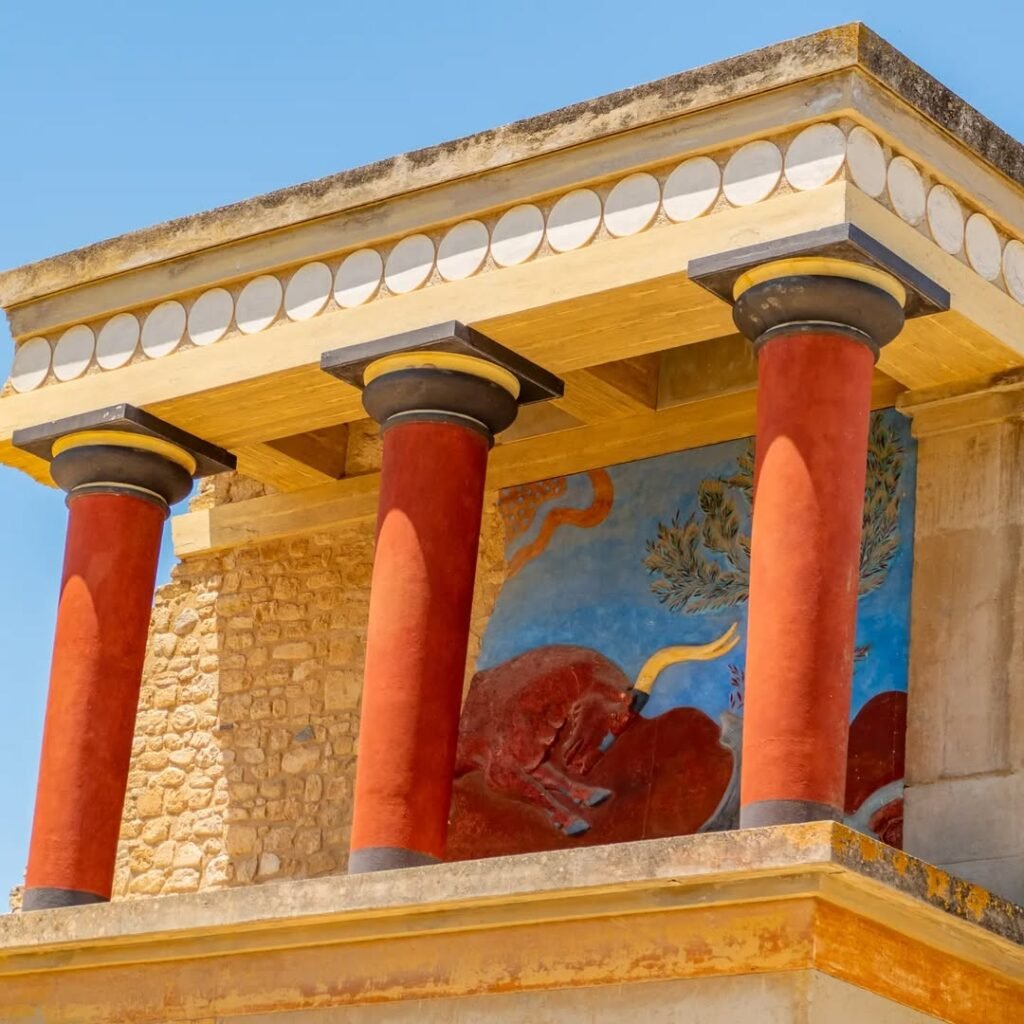
August proved to be the busiest month with 181,687 visitors, followed closely by July (165,168), September (147,039), and October (124,316). During peak summer days, the site regularly hosted over 5,000 daily visitors, with German tourists forming the largest international contingent.
The record attendance coincided with increased cruise ship arrivals at Heraklion port, though a slight dip was noted in June, attributed to the European Football Championship in Germany drawing potential travelers elsewhere.
Comprehensive Modernization Plan Unveiled
Responding to the growing visitor numbers, the Hellenic Ministry of Culture has initiated a €3.5 million investment plan to modernize the site while preserving its archaeological integrity. The improvements, scheduled to be completed in two phases by 2030, aim to enhance both accessibility and the overall visitor experience.
“It’s a holistic upgrade, which will make the site more visitor-friendly and more modern when it comes to the infrastructure,” Sithianaki explained. “This is a new era for the Knossos Palace.”
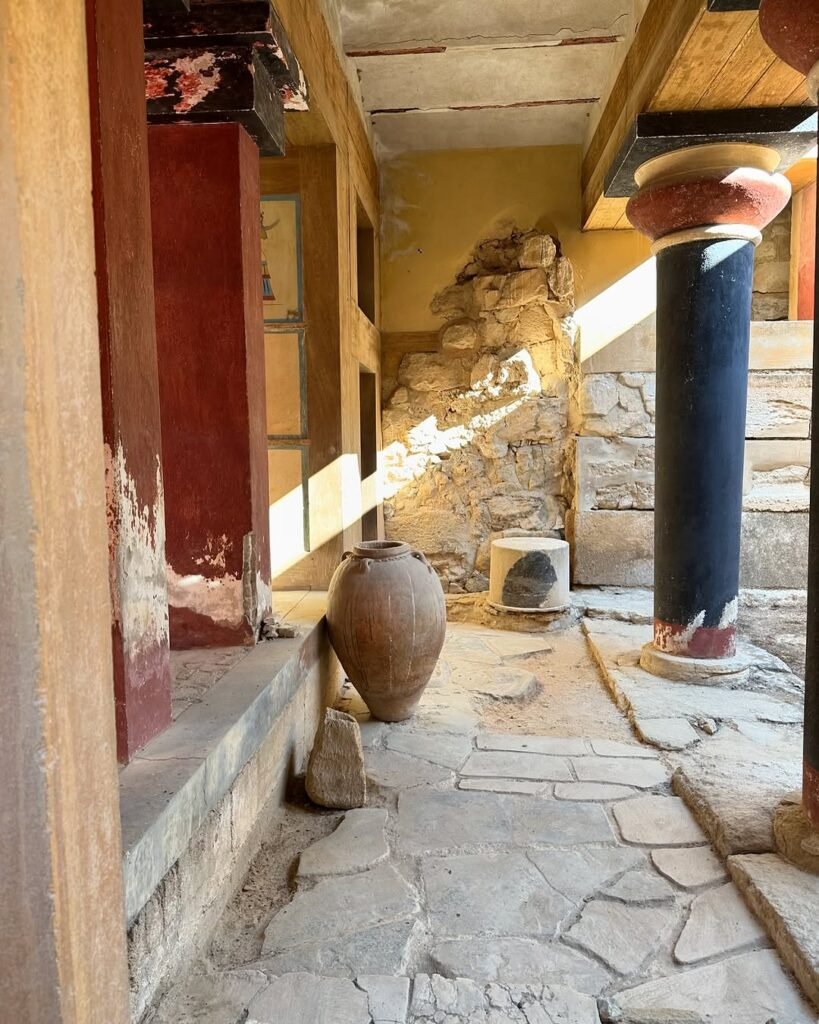
The renovation program includes:
- Construction of modern buildings for ticketing, storage, medical assistance, and visitor sanitation
- Relocation of the shop and café to the western outdoor area to improve visitor flow
- Development of a multimedia center offering educational insights before entering the archaeological site
- Enhanced pathways throughout the complex, including dedicated access for visitors with disabilities
- A redesigned entrance plaza to better manage incoming and outgoing visitor traffic
- Energy-efficient infrastructure designed with respect for the site’s archaeological value
These improvements align with Greece’s efforts to secure UNESCO World Heritage status for Knossos by summer 2025, potentially boosting the site’s international profile even further.
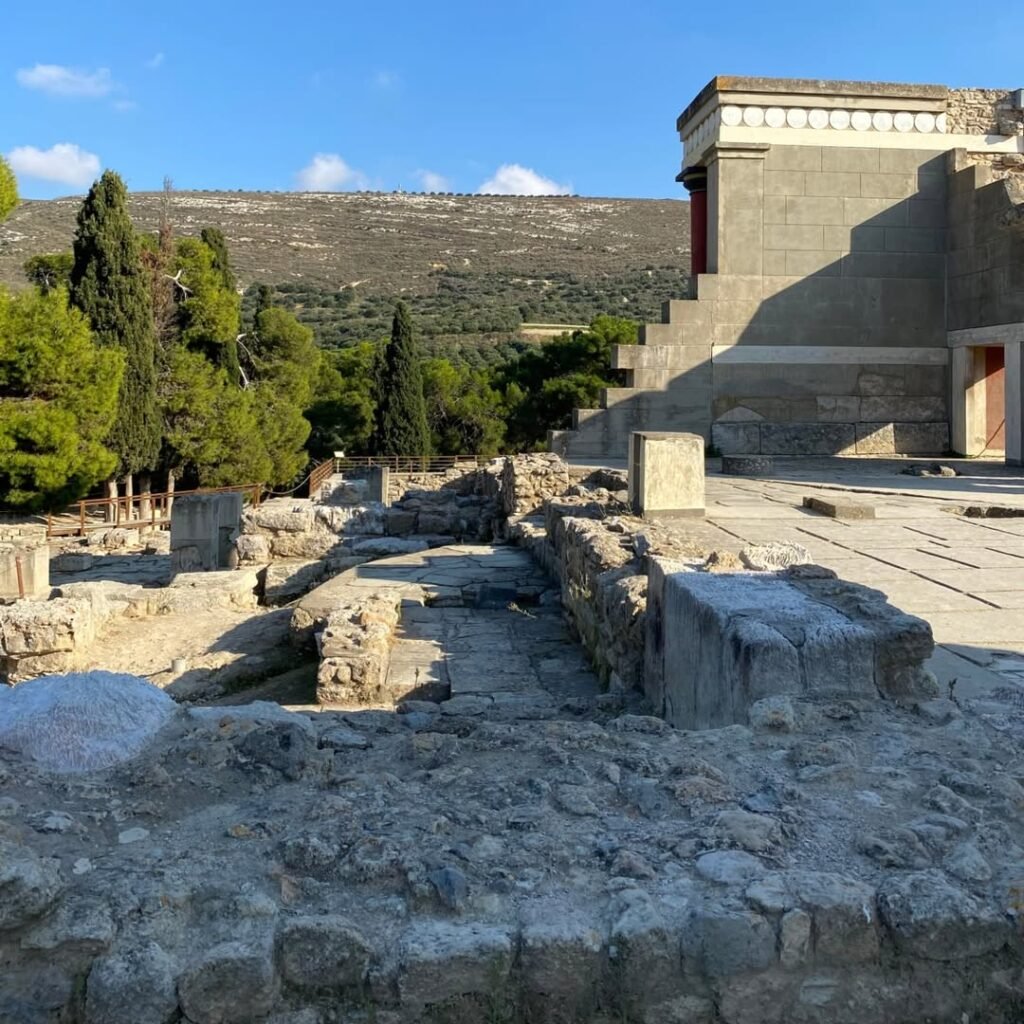
Ticket Price Adjustments Announced for 2025
Along with the physical improvements to the site, the Hellenic Ministry of Culture has announced changes to Knossos Palace’s admission fees, set to take effect on April 1, 2025.
Standard ticket prices will increase from €15 to €20, reflecting the site’s status as one of Greece’s most visited archaeological attractions. Reduced rates for EU seniors over 65 will remain at €8, and entry will continue to be free for EU citizens under 25.
The changes align with a nationwide restructuring of archaeological site fees based on annual visitor numbers. Sites receiving over 200,000 visitors annually—a category that includes Knossos—will have a standard admission fee of €20, putting them on par with comparable world-class heritage sites across Europe.
The Ministry has emphasized that these adjustments will support ongoing conservation efforts and site improvements while eliminating seasonal pricing variations in favor of consistent year-round rates.
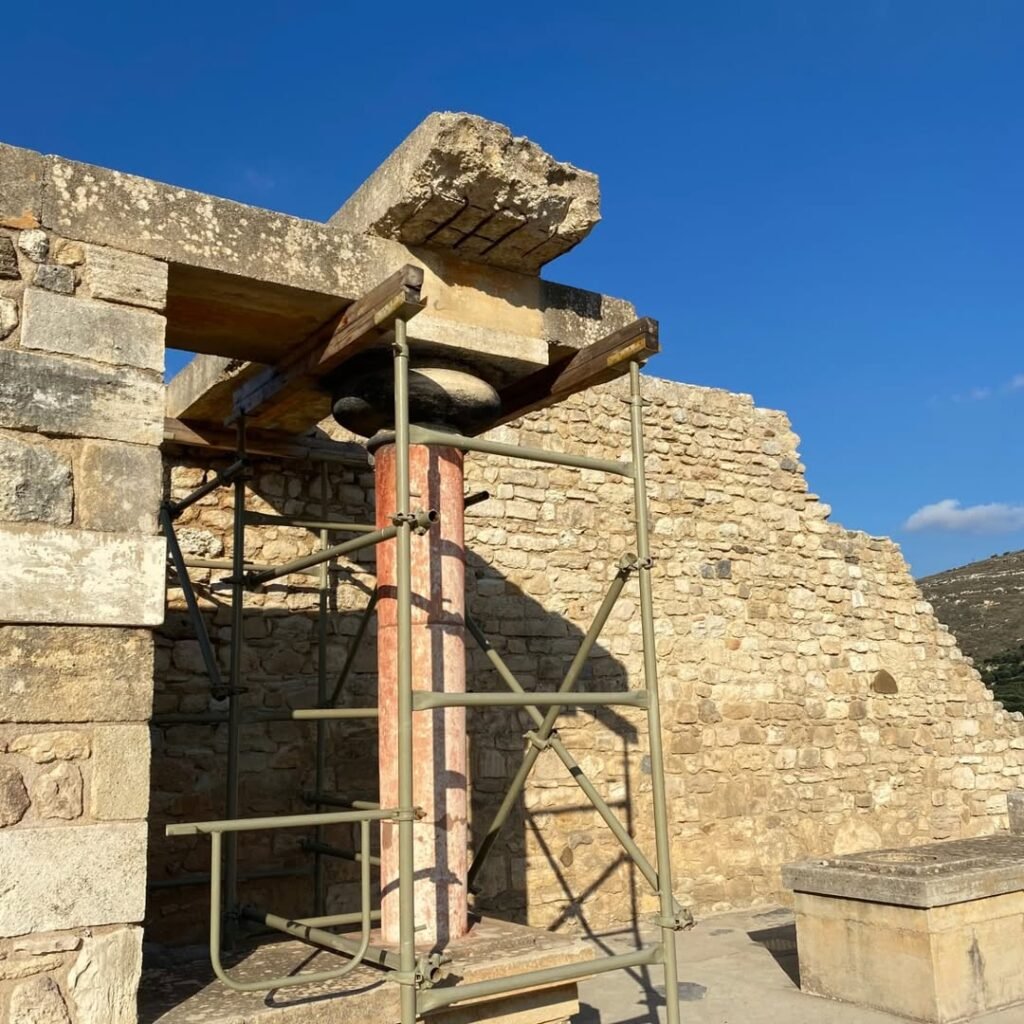
Academic Renaissance Through Knossos 2025 Project
Beyond tourist-focused improvements, the British School at Athens (BSA) is spearheading the Knossos 2025 Project, a £2.6 million initiative to modernize the Knossos Research Centre and its Stratigraphical Museum.
This ambitious academic project will double study and storage space with a new 700m² mezzanine floor, establish specialized laboratories for ceramic and bioarchaeological research, and create an online database of digitized collections accessible to researchers worldwide.
The project, supported by the Packard Humanities Institute and developed in partnership with the Hellenic Ministry of Culture, emphasizes both sustainable preservation and community engagement through workshops, lectures, and performances that connect scholars, locals, and visitors with Knossos’ 9,000-year history.
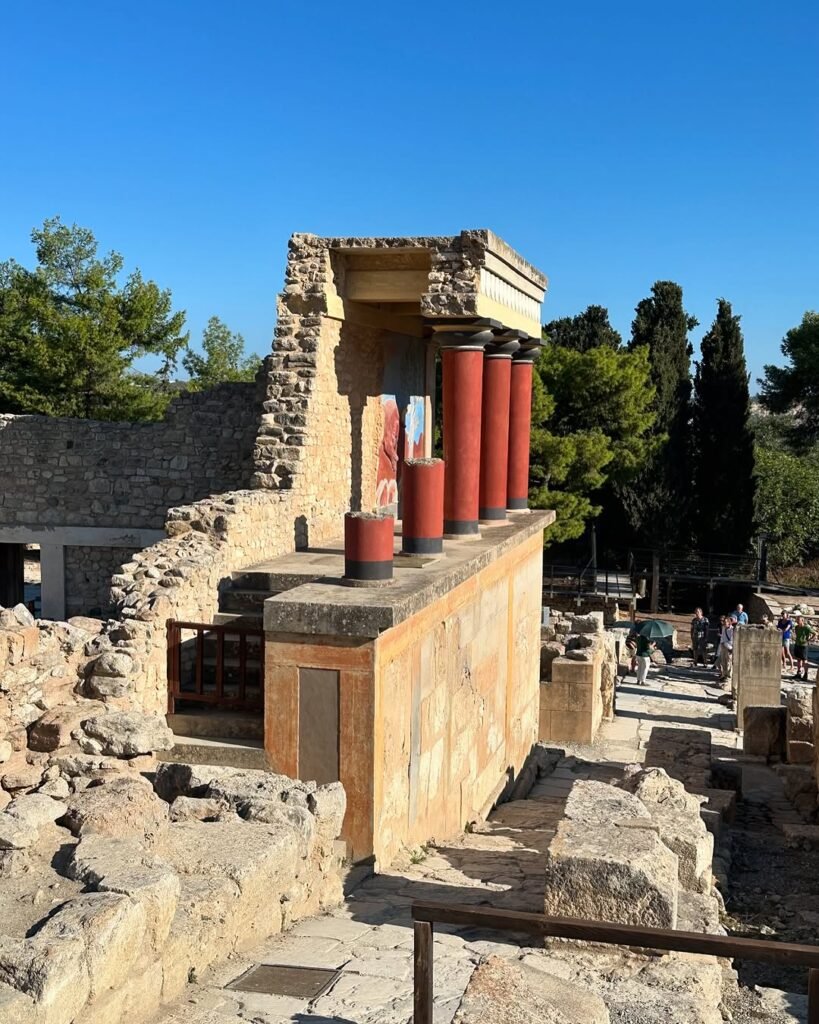
Recent Discoveries Enhance Site’s Significance
Recent archaeological work continues to yield important insights into Minoan civilization. Nearby excavations at the Minoan palace of Archanes revealed a unique gate sanctuary with four altars, highlighting the religious significance of the broader Knossos region.
At Knossos itself, ongoing digs have uncovered Neolithic layers dating back to 7000 BCE, demonstrating continuous occupation and early urban planning that challenges previous assumptions about cultural development in the region.
Renewed interest in the pioneering 19th-century excavations by Cretan archaeologist Minos Kalokairinos has also provided fresh context for early Minoan architectural discoveries that predate Sir Arthur Evans’ more famous work at the site.

Tourism’s Impact on Local Economy and Culture
“Knossos appeals to a large number of visitors, from those visiting the island for a few hours on a cruise, to scientists, archaeologists, and student groups from both Greek and foreign schools,” noted Sithianaki.
This diverse appeal contributes significantly to Crete’s tourism economy, which generated over €3 billion in 2024 and saw a 7.1% increase in bookings compared to the previous year. The archaeological site supports numerous direct and indirect jobs across the island, from specialized tour guides to hospitality workers.
Tips for Visitors in 2025
For those planning to visit Knossos in 2025, officials recommend:
- Timing your visit: The off-season (November–March) offers a more relaxed experience with fewer crowds, while early morning or late afternoon visits during high season (April–October) help avoid peak hours between 10 AM and 2 PM.
- Coming prepared: Comfortable shoes, sun protection, and water are essential, especially during summer months when temperatures can soar.
- Booking in advance: Online tickets (€20 standard entry from April 1, 2025) allow visitors to skip potentially long queues.
- Combining experiences: A visit to Knossos pairs perfectly with the nearby Heraklion Archaeological Museum, where original artifacts from the palace are displayed in their full glory.
With its legendary Throne Room, vibrant frescoes like the “Prince of Lilies,” and labyrinthine corridors tied to the myth of the Minotaur, Knossos continues to offer an unparalleled glimpse into Europe’s first advanced civilization — now enhanced by modern amenities and research capabilities for the million-plus visitors expected in 2025.
Published on: March 30th, 2025
Further Reading:
The Ancient Knossos Palace in Crete: Guide to a Minoan Wonder

